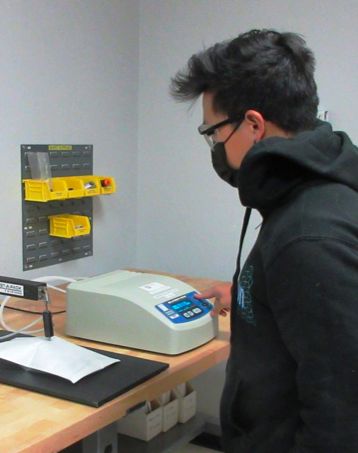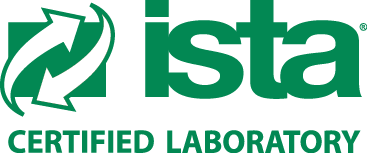Burst Testing: ASTM F2054
Burst testing evaluates a package’s response to pressurization. During this test, the minimum burst pressure is identified which aids in the establishment of safety design margins and package quality assurance.
Packaging Burst Testing
During a burst test, the test sample is exposed to high air pressure in a way that evenly stresses the package seals along its perimeter. The test yields the package’s ultimate failure pressure in addition to its failure mode and location, which can help indicate weak points in the packaging system itself.
In the medical device industry, burst testing is commonly used to determine and measure the burst strength of the medical device package Sterile Barrier System (SBS).

What is a Burst Test?
Have you ever wondered what amount of pressure would cause your packaging system to burst at the seams? A burst test can help package suppliers and in-house packagers answer this critical question. Identifying the minimum burst pressure is essential for any package that is subjected to pressure throughout its lifetime; it can aid in the establishment of safety design margins and offer important package quality assurance. Identifying a package’s minimum burst pressure can also provide manufacturers and customers confidence in the design and value of their product.
Why is a Burst Test Used?
A burst test is a commonly used standard in the medical field used to assess the safety and quality of medical device packaging. However, it can be applied to materials used for a variety of other industries as well. For example, if your package does not contain breathable material and your distribution environment takes your packages over the Rocky Mountains, what assurance do you have that the packages will not burst en route? By exposing packaging to high pressure, burst testing gives insight into a package system’s maximum threshold for pressurization, which is indicated by the “burst” of the package’s seal.
The primary objectives of a package burst test include:
- To determine what the ultimate failure pressure is (the point at which the package bursts)
- To identify the safety factor stated in the applied standards
- To identify where and how the package will burst
- To evaluate the package’s design
Frequently Asked Questions
Get answers to our most frequently asked questions.
What are the typical standards and protocols associated with a burst test?
Our accredited lab facilities adhere to the following burst test standards:
- ASTM F2054
- ASTM F1140
Burst testing can be conducted on both pouches and trays. While these require different fixtures and equipment accessories, the general testing procedure remains the same. Both pouches and trays are equally affected by pressure and altitude inputs.
How is a packaging burst test performed?
During burst testing, a package’s internal pressure is increased until it ruptures. This can be either a materials failure or seal failure. Because burst testing is a destructive test, the intact test sample cannot be recovered following the testing process. Burst testing is accomplished with the use of compressed air. After burst testing is complete, Westpak will provide the customer a detailed lab test report with the following:
- An overview of the test procedure and objectives
- A list of equipment used
- A description of the testing process and setup
- Test results, comments, and observations
- Description of points of failure
- An overview of the test procedure and objectives
- A list of equipment used
- A description of the testing process and setup
- Test results, comments, and observations
- Description of points of failure
What types of packages typically require a burst test?
Burst testing can be applied to a variety of different package types and products used in the medical industry and other sectors. Burst testing may be performed on:
- Medical device pouches
- Medical device trays
- Blood bags
- Cosmetic packaging
- Foil pouches
In addition to burst testing, what other packaging tests should I consider?
In addition to burst testing, we offer a number of other tests that can be useful for medical devices and other types of products. Our medical device testing capabilities include:
- Distribution Testing
- Temperature and Humidity Testing
- Accelerated Aging
- Real Time Aging
- Gross Leak Detection / Bubble Test
- Seal Strength / Peel Test
- Dye Penetration Testing
Accreditations:

Testing at Westpak has been accredited by A2LA to comply with ISO 17025

Westpak testing labs are ISTA certified to perform a variety of tests.
